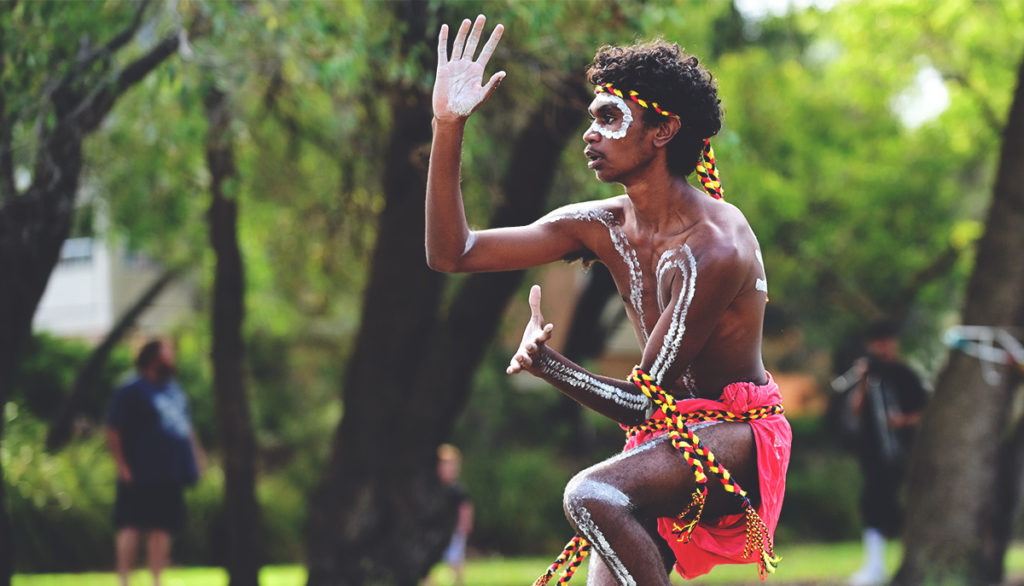Urban legends are widely told stories that include humour or horror, but often have very little evidence to support their claims. But, that doesn’t make them any less interesting! Read on for some of the craziest Australian conspiracy theories and urban legends, and do your best to distinguish fact from fiction.
The Somerton Man
On 1 December 1948, a man was found dead just south of Adelaide, South Australia, on Somerton Beach. He was completely clothed with freshly shined shoes, though the tags of his clothing had been cut off and he had no hat, which was quite strange for the time. What’s more mysterious is that he had no form of identification, and his fingerprints and dental records couldn’t be matched to anyone.
A tiny rolled up piece of paper was found in a hidden trouser pocket, which had been ripped from a book and contained only the words “tamám shud”, meaning “ended” or “finished” in Persian. The book from which the page was torn, Rubaiyat of Omar Khayyám, centred around themes of living a full life with no regrets when it ends, which created suspicions that the death was a suicide. However, many believe the unidentified man was a spy killed by his enemies. To this day, though, there’s still no conclusion as to who this man is, but a team at the University of Adelaide is actively working on figuring out his identity.
You can read more about this mysterious case here.
The bunyip
“Bunyip” is an Indigenous word, which today translates to “evil spirit” or “devil”. It describes a large water-dwelling creature that caused terror among Aboriginal people.
European sightings and drawings of the starfish-like creature appeared as early as 1818, but the bunyip was present in Aboriginal storytelling for dozens of years prior. The bunyip was first mentioned in a newspaper in 1851, where it was reported that a bunyip had killed an Aboriginal man and consequently been speared.
Skulls and bones have been found at the base of creeks, lakes and waterholes that are not attributed to known creatures, but which could belong to the bunyip.
Drop bears
This urban legend takes the cute, fuzzy and famously docile koala and turns it into something practically made for a horror movie. Drop bears are described as much larger versions of koalas with a carnivorous taste for human flesh. They live in trees and capture their prey by dropping on their heads.
Reported tactics to avoid drop bear attacks include spreading Vegemite behind your ears, placing forks in your hair, or speaking English with an Australian accent. These humorous methods of deterring attacks certainly make this urban legend a little difficult to believe!
Ghost of Lemon Tree Passage
A long road near New South Wales’ Port Stephens is the site of two tragic motorcycle deaths, one many years after the other. Both individuals were only 20 years old when they passed away, and apparently their spirits haven’t left the road since their death. Instead, it is said the spirits will shine a bright motorcycle headlight through the rear window of any car driving recklessly along Lemon Tree Passage Road as a warning, especially to young provisional drivers, so there won’t be further lives lost on the same road.
Blue Mountains black panthers
There have been reports of sighting big, black cats in New South Wales’ Blue Mountains for many decades, with photographic evidence of wild cats’ pawprints and of the panther itself circulating over the years. If a black panther was residing in the dense national park, it would be very far from home, being native to South and South-East Asia.
Nonetheless, believers claim the panthers could have escaped from a travelling zoo, were released by American soldiers during WWII, or may have been the exotic pets of rich expatriates. The New South Wales Department of Primary Industries has commissioned four inquests, so they must think there is some truth to the 500+ sightings!
The Hawkesbury River Monster
If the reports are true, Australia has its very own version of Scotland’s Loch Ness Monster! The first reports of the Hawkesbury River Monster date back thousands of years when the Dharuk people created rock art of a huge, long-necked creature. Some of these markings are still visible along New South Wales’ Hawkesbury River, where sightings have been reported since the early 1900s. Eyewitness reports tend to describe a very similar sized and shaped creature, but never any violence from the monster.
Jack the Ripper’s Australian relocation
England’s most notorious serial killer is reported to have traded the UK for Australia and moved to Melbourne, Victoria, under the name Frederick Bailey Deeming.
Suspicions were raised when Deeming was convicted of murdering his wife on Christmas Eve 1891, when it was then discovered that he had also murdered his first wife and their four children in Rainhill, England, just six months prior. His presence in the UK aligns with the Jack the Ripper killings, and the theory was supported by several Scotland Yard detectives.
Albino creatures under St James station
This one is at least partially true! Before World War II, train tunnels were constructed in Sydney’s CBD to connect the city to Bondi and the Northern Beaches, but work was halted and the tunnels remain unused to this day.
However, rumour has it that the tunnels are the gateway to a huge lake that’s six metres deep at its centre and located underneath Sydney’s St James station. Here, it’s rumoured that albino eels reside and swim in the stagnant, swamp-like water.
Harold Holt’s disappearance
Harold Holt was the prime minister of Australia way back in 1966. Only a year into his term, he went missing after going swimming at Cheviot Beach in Portsea, which is located at the tip of the Mornington Peninsula.
What makes this case particularly curious is that no evidence was found, nor was his body. There are several theories – some of them conspiracies – surrounding his disappearance, including suicide, assassination by the CIA due to Holt wanting to withdraw Australia from the Vietnam War, and faking his own death to either be with his lover or defect to China after being a long-term spy for the country.





